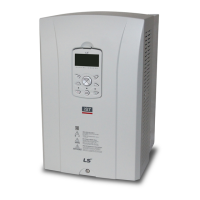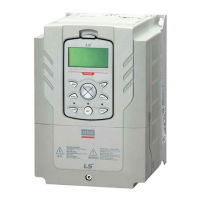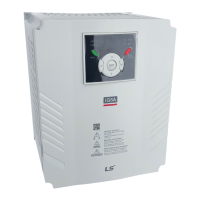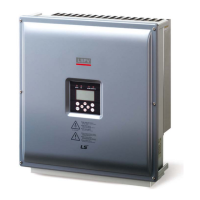Occurs when the DC circuit voltage is lower than the specified
value during inverter operation
The input voltage has decreased
during the operation.
Check whether the input voltage is lower than the specified value.
An input phase-loss has occurred.
The magnetic contactor
connected the power source is
faulty..
Replace the magnetic contactor.
Occurs when there is excessive current than the specific
value due to a ground fault in the output. The ground fault
detection current is different per inverter capacity.
Ground fault occurred in the
output lead.
Separate the output wiring and check whether the ground fault is
present. Remove the ground fault
There is a problem in the wiring
between the inverter and the
motor.
Check the output wiring as well as the recommended specifications of
the wiring length, thickness, etc. Replace it if necessary.
The insulation of the motor is
damaged.
Decrease the carrier frequency value.
Motor
overheat
fault trip
Occurs depending on the inverse time (delay) to prevent
overheat of the motor due to overload. Operation will resume
after setting PRT-40 at a value other than 0.
The motor has overheated.
Reduce the load or operation frequency.
The inverter load is greater than
the rated capacity.
Replace the inverter that has a bigger capacity.
The value for electronic thermal
protection (ETH) is too low.
Set the ETH level appropriately.
The inverter has been operating
at low speed for a long time.
Replace the motor that supplies extra power to the cooling fan.
Output
open-phase
fault trip
Occurs when one of the three output phases is phase open.
Operation will resume after setting PRT-05 bit 1 to 1.
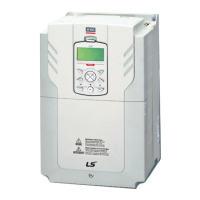
